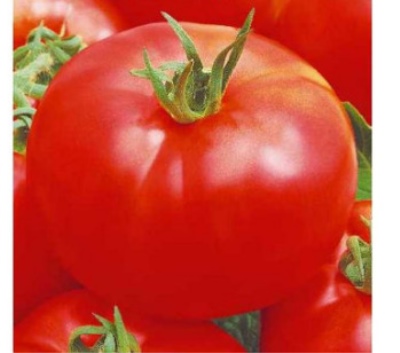
- Authors: Kashnova Elena Vasilievna, Andreeva Nadezhda Nikolaevna, Stolbova Tatyana Mikhailovna, Kotelnikova Marina Aleksandrovna
- Year of approval: 2007
- Category: grade
- Growth type: determinant
- Appointment: fresh consumption
- Ripening period: mid-season
- Growing conditions: for open ground
- Leaves: medium, green
- Unripe fruit color: light green
- Ripe fruit color: pink
Among the modern varietal variety of tomatoes, there are breeding developments that do not amaze with any one excellent feature - gigantic size, original color or amazing taste, but please with stability and versatility. This fully applies to the Alei tomato - an unpretentious and tasty variety from Siberia.
Breeding history
The Alei tomato variety was bred by employees of the West Siberian Vegetable Experimental Station: EV Kashnova, TM Stolbova, NN Andreeva and MA Kotelnikova. The station is located in Barnaul and is a branch of the Federal Research Center of Vegetable Growing. , which is claimed by the originator. The well-known Siberian agrofirm "Altai Seeds" owns the patent for the variety. Since 2007, the variety has been included in the State Register and approved for breeding in personal subsidiary plots throughout the Russian Federation.
Description of the variety
Alei is a mid-season, resistant to cultivation in various climatic zones, a productive variety for open ground (and greenhouses). The shrub is of a determinant type, with a height of 65 to 120 cm. Round or elongated fruits of medium size, raspberry-red, with high taste, have a universal, but mainly salad purpose.
The main qualities of the fruit
Alei tomatoes have an average size and weight of about 100-135 g. Very rare specimens reach 250-300 g. They have two configurations: they can be either slightly elongated, plum-shaped, or round. Ribbing in both forms is practically absent.
The skin is smooth, thin, light green in unripe fruits, gradually turns pink and acquires a bright pink color, reddening at the stage of full ripeness. The pulp is fleshy, but tender, sugary and juicy, with a pronounced tomato aroma. Seed chambers - 6 or more pieces. The fruits are of medium density, well transported and stored.
Taste characteristics
Many pink varieties have a higher sugar content. The taste of Alei tomato is highly rated: it is balanced, sweet and sour. In the characteristics of the State Register, the variety is declared as a salad, but it may well be used for making sauces, vegetable caviar, lecho, and other dishes and preparations. Small tomatoes do not crack and are great for whole fruit preservation.
Ripening and fruiting
This is a mid-season variety that ripens in late July - early August in a greenhouse, a little later in the open field. From germination to the mass appearance of ripe fruits, it takes about 3.5-4 months. Fruiting is amicable, the tomatoes are leveled, almost of the same size, they become smaller only by the very end of the season. You can harvest the harvest ripening on the bushes before the first autumn frosts.
Yield
On a bush 1 m high, about 6-8 fruit clusters are formed with 5-6 fruits each. The yield of the variety is average and above average, from 4 kg per 1 sq. m. This variety appeared on the market not so long ago, and there are very few reviews from gardeners so far, but there is information that indicators can reach 10-15 kg per 1 sq. m. The collection is of high commercial quality.
The timing of planting seedlings and planting in the ground
The seeds of the Alei variety are sown in March, when the first full-fledged leaves appear, the seedlings dive. After about 2 months, the seedlings are transferred to a permanent place: in the open ground or in a greenhouse.

Growing tomato seedlings is an extremely important process, because it largely depends on whether the gardener will be able to harvest at all. All aspects must be taken into account, from seedbed preparation to planting in the ground.
Landing scheme
Alei bushes are quite compact, but densely covered with foliage. For comfortable growth and prevention of diseases, plants need space; when planting, it is recommended to arrange them according to a 50 x 40 cm pattern.

Growing and care
High-quality tomatoes from LLC Agrofirma "Seeds of Altai" have increased indicators of winter hardiness and unpretentiousness to temperature extremes. Such characteristics make it possible to successfully grow Alei from the western to eastern borders of Russia.
Caring for a determinant bush of this variety is simple: in an open area, the plant is usually pinned and led in 1-2 stems, in a greenhouse it can be formed into 3 stems. The bush is densely covered with fruits, it is recommended to tie up heavy brushes.
Plants should not be watered too often, waterlogging can cause fungal diseases. Watering is carried out at the root, the root zone must be periodically loosened, it can be mulched.
Top dressing is carried out regularly: nitrogen is applied during planting, magnesium fertilizers will enhance the growing season, and potassium will help during the ripening period of the fruit.




A plant needs different micronutrients at each stage of growth. All fertilizers can be divided into two groups: mineral and organic. Folk remedies are often used: iodine, yeast, bird droppings, eggshells.
It is important to observe the rate and period of feeding. This also applies to folk remedies and organic fertilizers.
Disease and pest resistance
Alei is characterized by breeders as an absolutely non-capricious plant with good immunity. Bushes can be affected by late blight, especially with prolonged and frequent rains. You can protect yourself from this disease with preventive spraying or use a proven and fruit-safe method: remove all foliage from the plant.
The introduction of ash into the soil, treatment with biological products and insecticides will help from pests.



























































































